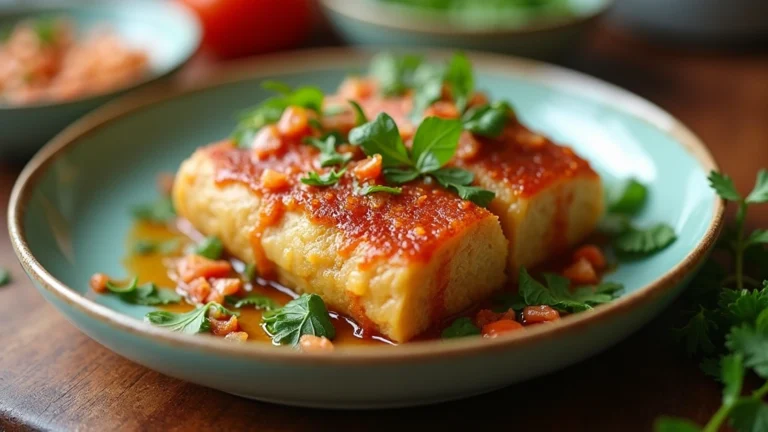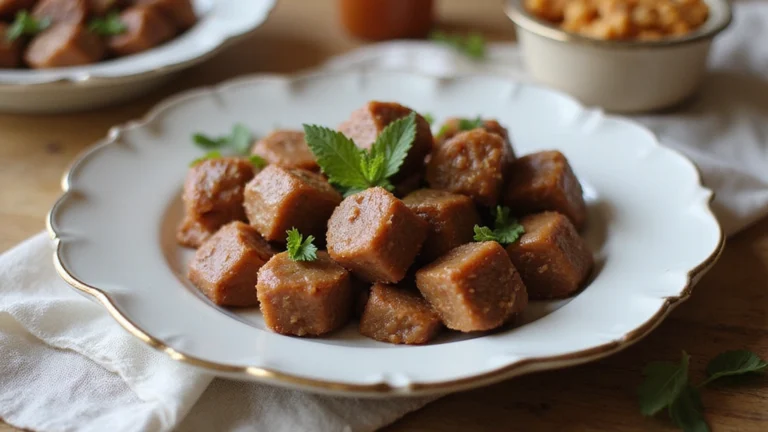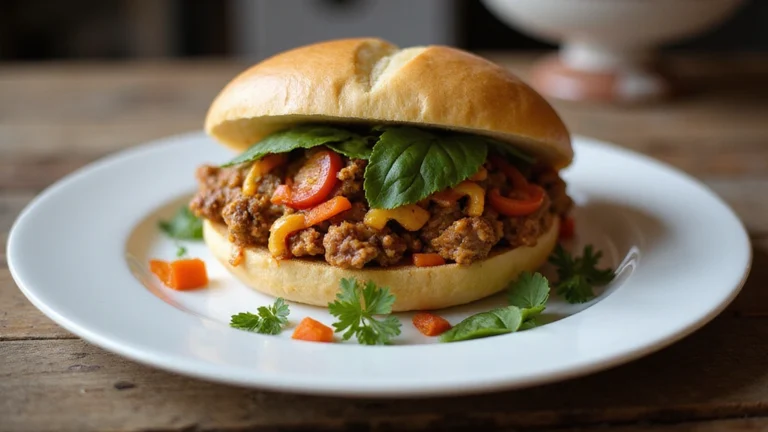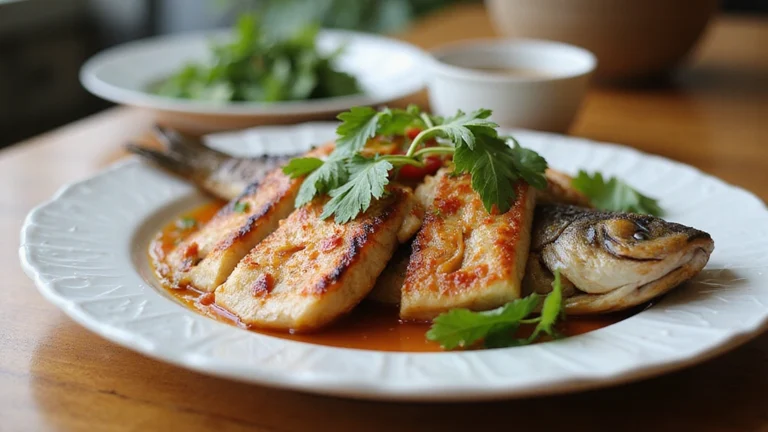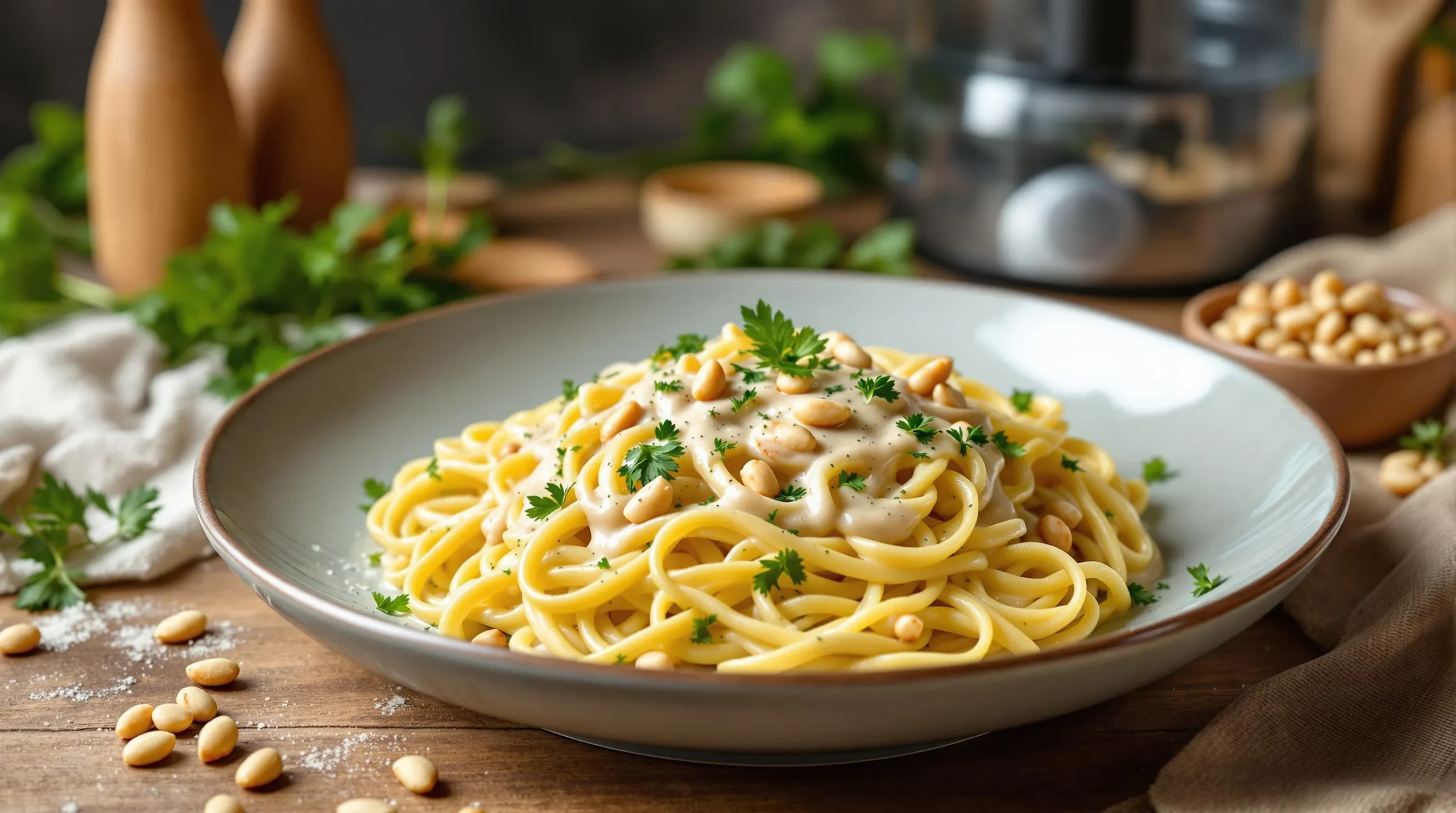
What Is Pine Nut Sauce?
Pine nut sauce is a luxurious Mediterranean condiment made primarily from toasted pine nuts blended with olive oil herbs and garlic. The smooth creamy texture comes from the natural oils released when the pine nuts are processed creating a rich velvety sauce that coats your palate. Unlike traditional pesto which relies heavily on basil and includes Parmesan cheese pine nut sauce lets the buttery flavor of the nuts take center stage.
This versatile sauce originated in regions where pine nuts were abundant particularly around the Mediterranean basin. Countries like Italy Spain and Lebanon have their own variations with slight differences in ingredients and preparation methods. The Italians often call it “salsa di pinoli” while in Spanish cuisine you might find it as “salsa de piñones.”
Pine nut sauce delivers a complex flavor profile that balances nuttiness with bright herbal notes. The toasting process enhances the natural sweetness of pine nuts while adding a subtle depth that raw nuts simply cannot provide. “I discovered this sauce during my travels through Sicily” shares Liam Kohn. “A local chef showed me how just a few quality ingredients could create something truly groundbreaking when prepared with care.”
The consistency can range from chunky to silky smooth depending on your preference and how you plan to use it. A thicker version works beautifully as a spread for crostini or as a filling for stuffed vegetables while a thinner consistency makes an excellent pasta sauce or drizzle for grilled meats and vegetables.
What sets pine nut sauce apart from other nut-based sauces is its delicate flavor that enhances rather than overwhelms other ingredients. Its subtle complexity allows it to complement everything from simple roasted vegetables to elaborate seafood dishes making it an incredibly versatile addition to your culinary repertoire.
Why You’ll Love This Pine Nut Sauce
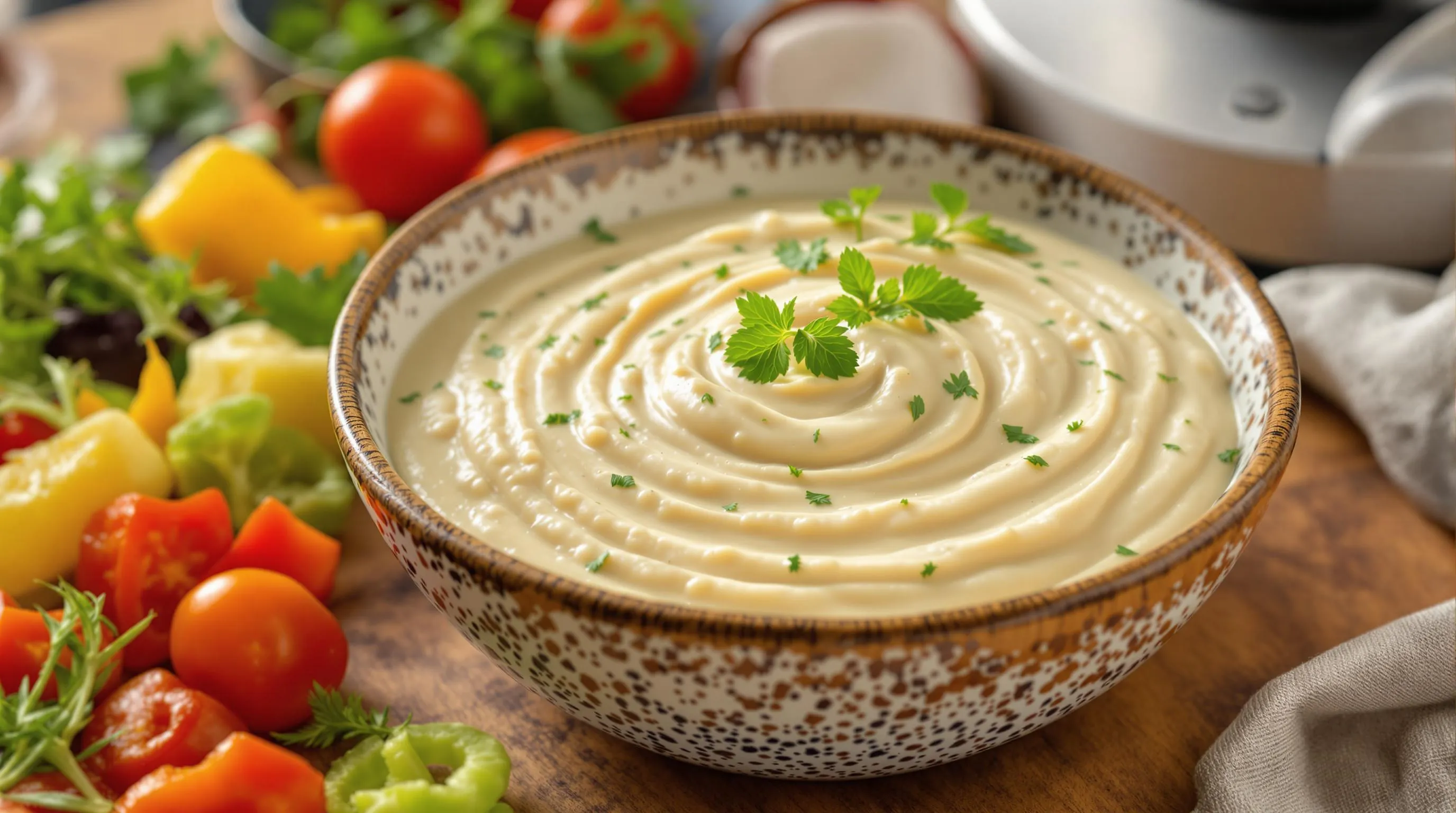
This pine nut sauce offers a perfect balance of rich flavor and nutritional benefits that will transform your everyday meals into culinary delights. The buttery texture combined with aromatic herbs creates a versatile condiment you’ll find yourself reaching for repeatedly.
Nutrient Powerhouse – Pine nuts pack an impressive nutritional profile with 13.7g of plant protein per 100g along with essential minerals like magnesium zinc and iron. Your body will appreciate the vitamin E and manganese content that supports overall health.
Heart-Healthy Option – The monounsaturated and polyunsaturated fatty acids in pine nuts actively support healthy cholesterol levels. Studies show that pinolenic acid a unique compound found in pine nuts may help lower LDL cholesterol and potentially regulate blood sugar.
Incredibly Versatile – This sauce works beautifully as a pasta coating spread for sandwiches dip for vegetables or drizzle for roasted dishes. Its adaptability means you’ll never run out of creative ways to incorporate it into your meals.
Quick Preparation – Using just a food processor you can whip up this luxurious sauce in minutes making it perfect for both weeknight dinners and special occasions when time is limited.
Satisfying Richness – The natural oils released during processing create a creamy texture without added dairy. This satisfying quality helps promote fullness which may aid in weight management when enjoyed as part of a balanced diet.
Unique Flavor Profile – Unlike heavier sauces the delicate nutty flavor of pine nut sauce enhances rather than overwhelms other ingredients allowing the natural flavors of your dish to shine through.
Key Ingredients For Pine Nut Sauce
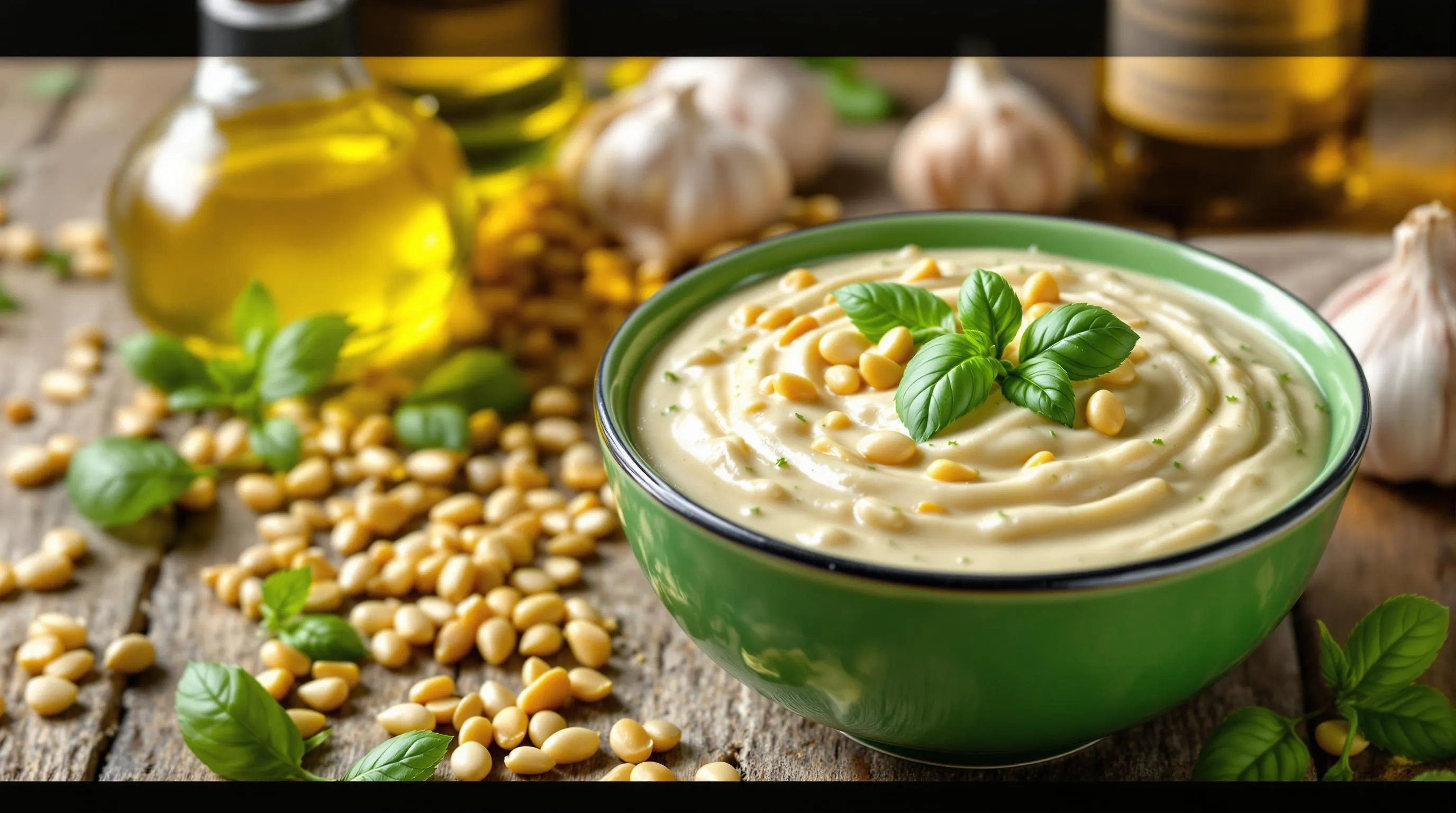
Creating an authentic pine nut sauce requires a careful selection of high-quality ingredients that work together to deliver its signature rich and complex flavor profile. Each component plays a crucial role in developing the sauce’s distinctive character and versatility.
Pine Nuts
The foundation of any great pine nut sauce begins with these small, elongated ivory-colored kernels harvested from pine cones. You’ll want to select fresh, plump pine nuts with a sweet aroma and no signs of rancidity. Toasting them before incorporation dramatically enhances their buttery flavor and releases essential oils that give the sauce its luxurious texture. Pine nuts provide the sauce’s characteristic nutty richness and contribute substantial nutritional value with their impressive 13.7g of plant protein per 100g serving. Their natural oils create the creamy consistency that makes this sauce so desirable without needing additional thickeners or dairy products.
Fresh Herbs
Vibrant herbs breathe life into pine nut sauce, adding brightness that balances the richness of the nuts. Parsley offers a clean, verdant flavor that complements the pine nuts without overwhelming them. Basil brings sweet, aromatic notes reminiscent of traditional pesto but allows the pine nuts to remain the star. You can experiment with other herbs like mint for a refreshing twist or sage for a more earthy, robust sauce. Fresh herbs not only contribute flavor but also provide visual appeal with their vibrant green color that makes the finished sauce more appetizing and appealing.
Olive Oil
Extra virgin olive oil serves as both a flavor carrier and textural component in pine nut sauce. You should select a high-quality oil with fruity notes rather than overly bitter varieties that might compete with the delicate pine nut flavor. The oil binds the ingredients together while adding its own peppery notes and silky mouthfeel. Extra virgin olive oil also enhances the sauce’s heart-healthy profile with its monounsaturated fats that complement the beneficial fatty acids already present in pine nuts. The richness of good olive oil amplifies the luxurious character of the sauce without making it heavy.
Other Flavor Enhancers
Several supporting ingredients elevate pine nut sauce from good to exceptional. Fresh garlic adds essential pungency and depth that cuts through the richness of the nuts and oil. Lemon juice brightens the entire sauce with its acidity while improving the natural flavors of the other ingredients. Salt and freshly ground black pepper are crucial for proper seasoning that brings all elements into balance. Some regional variations incorporate roasted red peppers for sweetness and color or smoked paprika for warmth and complexity. These flavor enhancers can be adjusted according to your preference or the exact dish you’re planning to serve with your pine nut sauce.
Equipment Needed
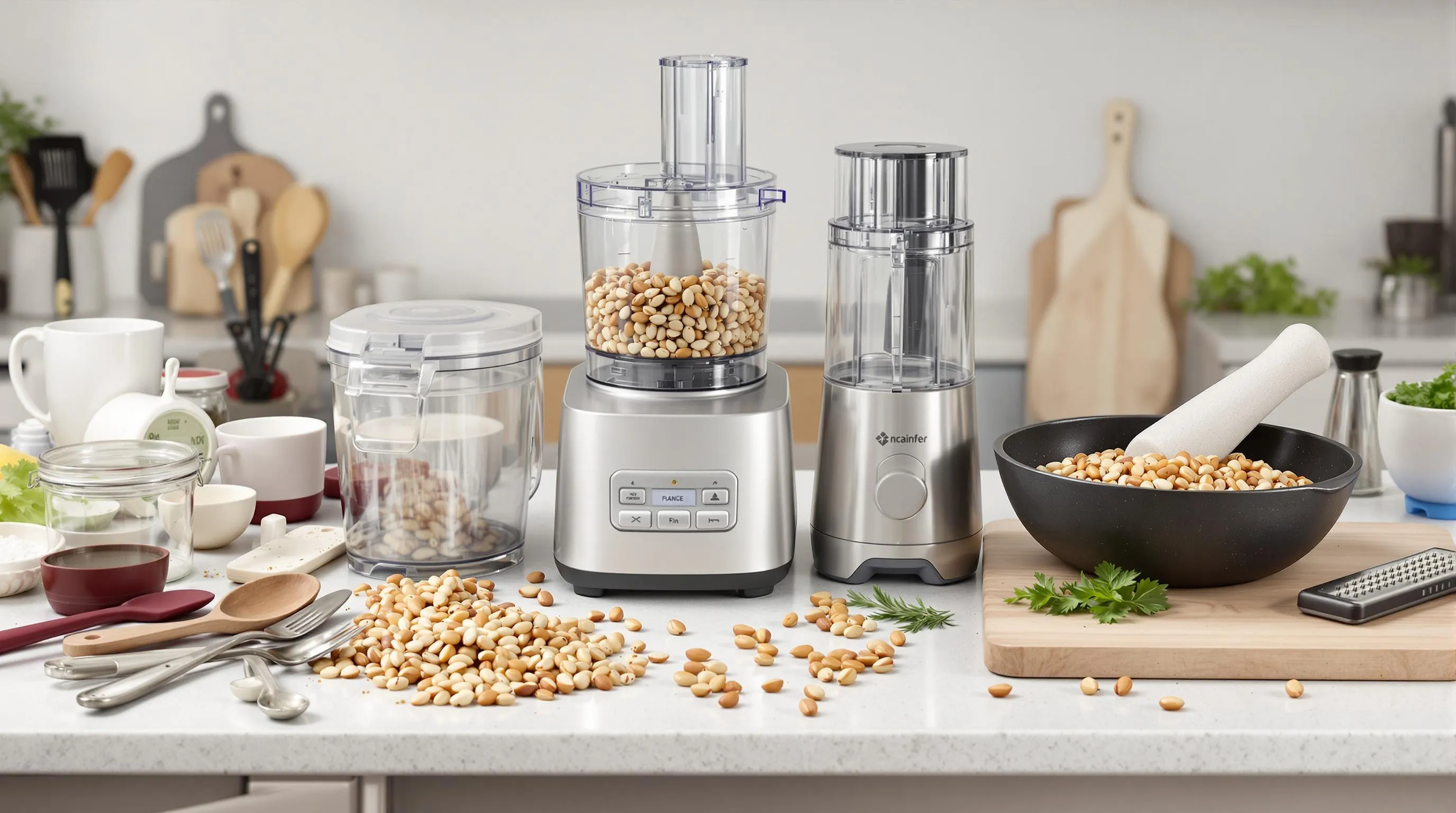
Creating the perfect pine nut sauce requires minimal but exact kitchen tools to achieve that signature creamy texture and complex flavor profile. Your success depends largely on having the right equipment ready before you begin.
Food Processor
A standard food processor serves as the primary tool for creating a smooth, emulsified pine nut sauce. This versatile appliance quickly breaks down the toasted pine nuts while incorporating other ingredients into a cohesive mixture. The pulsing function allows you to control the final texture, whether you prefer a slightly chunky consistency or velvety smoothness.
Mini Food Processor Alternative
For smaller batches, a mini food processor works perfectly and reduces cleanup time. These compact machines handle the pine nuts efficiently even though their smaller capacity, making them ideal when preparing sauce for just one or two servings.
Mortar and Pestle
Traditional preparation methods call for a mortar and pestle to crush pine nuts by hand, resulting in a rustic texture with intense flavor release. This ancient tool creates a different character in your sauce by manually extracting oils from the nuts through grinding rather than high-speed blending. The coarser texture produced through this method adds an authentic touch appreciated by culinary purists.
Skillet for Toasting
A heavy-bottomed skillet provides even heat distribution necessary for properly toasting pine nuts. This essential step enhances the natural sweetness and nutty flavor of pine nuts before they’re processed into sauce. The wide surface area allows for quick, even browning while giving you clear visibility to prevent burning.
Additional Helpful Items
- Silicone spatula for scraping every bit of precious sauce from the processor bowl
- Measuring cups and spoons for precise ingredient proportions
- Storage container with airtight seal to preserve leftover sauce
- Microplane or fine grater for preparing fresh garlic or adding citrus zest
- Cutting board and knife for chopping fresh herbs
With these simple tools at your disposal, you’ll be well-equipped to create Amy Chaplin’s easy pine nut sauce or the more complex Lebanese-inspired pine nut and garlic sauce from Taste of Beirut. Proper equipment ensures the pine nuts transform from simple ingredients into a luxurious condiment worthy of improving everything from homemade pasta to steamed vegetables.
How To Make Pine Nut Sauce
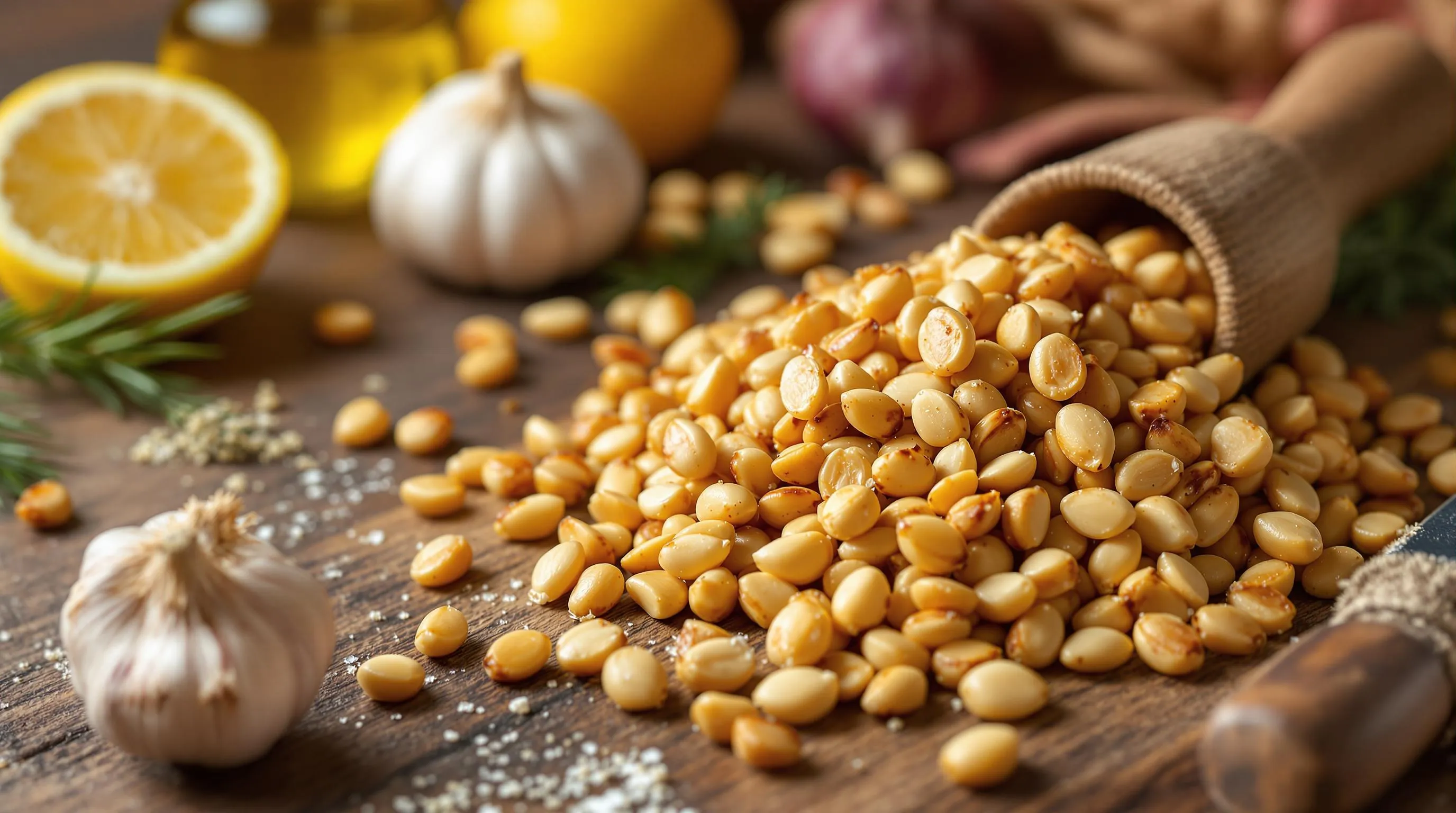
Creating the perfect pine nut sauce requires attention to detail and a few simple techniques. Follow these steps to achieve a rich velvety sauce with that signature nutty flavor.
Toasting The Pine Nuts
Toasting pine nuts is a crucial first step that significantly enhances their natural buttery flavor. You can choose from several effective methods depending on what equipment you have available. For stovetop toasting, warm a skillet over medium heat then reduce to low and toast the pine nuts for approximately 5 minutes while stirring frequently until they become fragrant and develop a golden hue. Oven toasting provides a more hands-off approach—simply spread your pine nuts evenly on a baking sheet and place in a preheated 350°F oven for about 8 minutes, stirring occasionally to ensure even browning. For a quick solution, place pine nuts on a microwave-safe plate and toast in short intervals, checking frequently until they become aromatic. Regardless of your chosen method, watch the pine nuts carefully as they can quickly go from perfectly toasted to burnt due to their high oil content.
Blending The Sauce
After toasting, allow your pine nuts to cool completely before proceeding with the blending process. Transfer the cooled nuts to your food processor or blender along with complementary ingredients like fresh garlic, bright lemon juice, and high-quality olive oil. Process these ingredients together until they form a smooth, cohesive paste. The natural oils released from the pine nuts during blending will contribute to the sauce’s luxurious texture. Pulse the mixture initially to break down the larger pieces before running the processor continuously for a smoother consistency. Scrape down the sides of your food processor bowl occasionally to ensure all ingredients incorporate evenly into your sauce.
Adjusting Consistency And Flavor
The final step involves personalizing your pine nut sauce to suit your exact dish and taste preferences. Add small amounts of water or additional olive oil to achieve your desired consistency—thinner for a drizzling sauce or thicker for a spread or dip. Taste your sauce and adjust the seasoning by adding salt, extra lemon juice for brightness, or fresh herbs for color and flavor dimension. Different applications may require different consistencies; pasta typically needs a slightly looser sauce while vegetable dips benefit from a thicker texture. Remember that the sauce will thicken slightly when refrigerated, so you might want to make it a touch thinner than your final goal. The versatility of pine nut sauce makes it perfect for customization—try adding roasted garlic for depth or red pepper flakes for heat to create your own signature variation.
Ways To Use Pine Nut Sauce
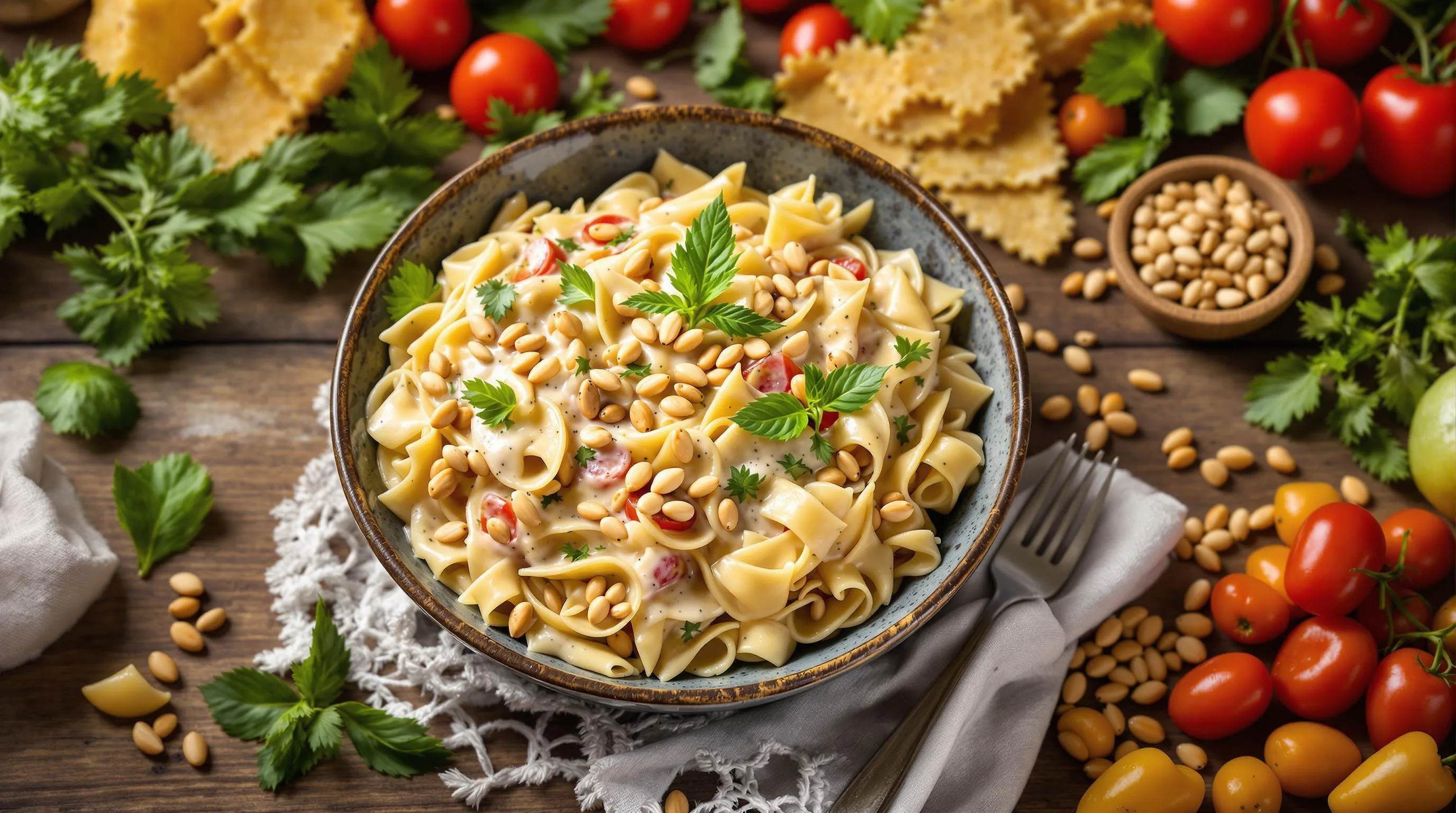
This versatile sauce brings creamy richness and nutty complexity to countless dishes. You’ll find endless opportunities to incorporate pine nut sauce into your everyday cooking with these practical applications.
Pasta Dishes
Transform your pasta nights with a generous swirl of pine nut sauce that coats each strand with buttery richness. You can toss it with any pasta shape for an instant upgrade that doesn’t rely on heavy cream or cheese while still delivering luxurious texture. For an impressive combination, pair pine nut sauce with figs and prosciutto on pasta topped with additional toasted pine nuts to create layers of sweet savory and nutty flavors. Fresh vegetables and herbs mix beautifully with this sauce in lighter pasta preparations where the nutty undertones enhance rather than overwhelm the fresh ingredients. Try Amy Chaplin’s recommendation of serving pine nut sauce with homemade pasta skillet-roasted tomatoes and fresh greens for a vibrant meal that showcases seasonal produce.
Meat And Fish Pairings
Elevate delicate proteins with the balanced flavor profile of pine nut sauce that complements without overpowering. You’ll find this sauce particularly divine with light white fish varieties whether steamed or baked as the citrusy nutty and garlicky notes highlight the seafood’s natural flavors. Serve the sauce cold or at room temperature alongside fish for a Mediterranean-inspired meal that feels both elegant and effortless. When roasting or grilling meats pine nut sauce adds welcome moisture and a punch of flavor that cuts through richness and enhances leaner cuts. The bright acidity from lemon juice in the sauce provides perfect balance to heartier proteins creating a harmonious dish with minimal effort.
Vegetable Accompaniments
Breathe new life into your vegetable preparations by incorporating pine nut sauce as a flavorful enhancement. You can use it as a sophisticated dip for raw vegetable crudités including celery carrots and green peppers for an appetizer that disappears quickly at gatherings. Drizzle the sauce over steamed vegetables like broccolini or asparagus to add creamy tanginess that transforms simple sides into memorable dishes. The sauce offers a healthier alternative to heavier dressings while still delivering satisfying richness that makes vegetables more appealing. Roasted root vegetables benefit from a finishing touch of pine nut sauce which melts slightly from the heat creating a luxurious coating that elevates humble ingredients to restaurant-quality sides.
Storage Tips
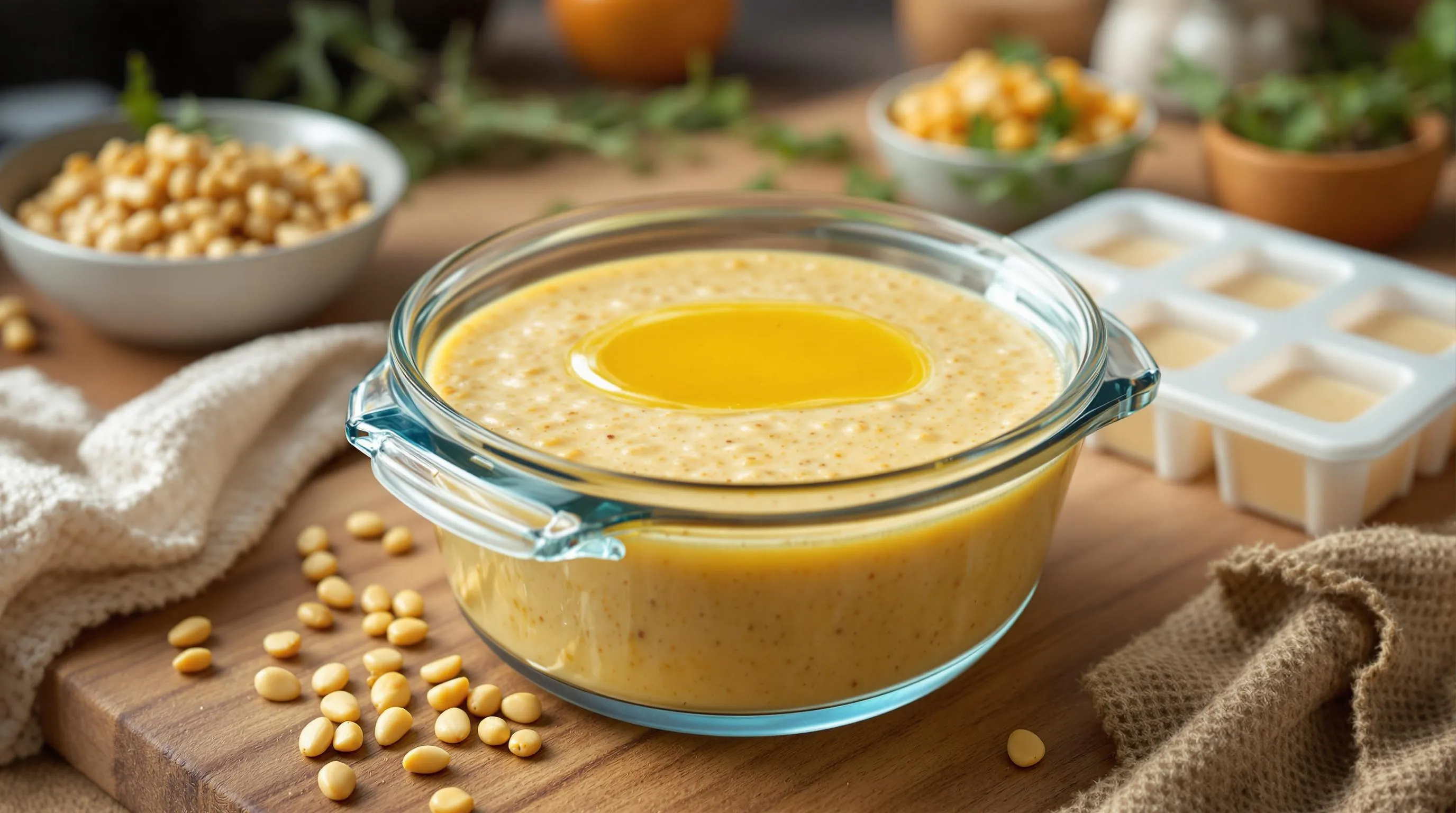
Your homemade pine nut sauce deserves proper storage to maintain its fresh flavor and nutritional benefits. Following these guidelines will help preserve this delicious condiment at its best quality.
Refrigerator Storage
Store your freshly made pine nut sauce in an airtight container in the refrigerator for optimal freshness. Adding a thin layer of olive oil on top creates a protective seal that prevents oxidation and extends shelf life. This method keeps your sauce fresh for 3-5 days while maintaining its vibrant flavor profile. Glass containers work exceptionally well as they don’t absorb odors or flavors that might compromise the delicate taste of your sauce.
Freezer Storage
For longer preservation pine nut sauce freezes beautifully for up to 3 months without important quality loss. Pour the sauce into ice cube trays for convenient single-serving portions that thaw quickly. Once frozen transfer these cubes to freezer-safe bags or containers labeled with the preparation date. This method provides ready-to-use portions perfect for weeknight cooking when time is limited.
Storage Best Practices
Always keep pine nut sauce away from heat sunlight and moisture as these elements accelerate spoilage and rancidity. The high oil content in pine nuts makes them particularly susceptible to turning rancid when improperly stored. Remember to label your containers with dates to easily track freshness. When freezing leave approximately half an inch of headspace in containers to allow for expansion during the freezing process.
Storing Unused Pine Nuts
Extend the shelf life of your unprocessed pine nuts by storing them in the refrigerator for up to 6 months or in the freezer for up to a year. Their high fat content makes them prone to rancidity at room temperature. Airtight containers protect these delicate nuts from moisture and odors that could compromise their sweet buttery flavor. Properly stored pine nuts ensure you always have the key ingredient ready for your next batch of sauce.
Variations Of Pine Nut Sauce
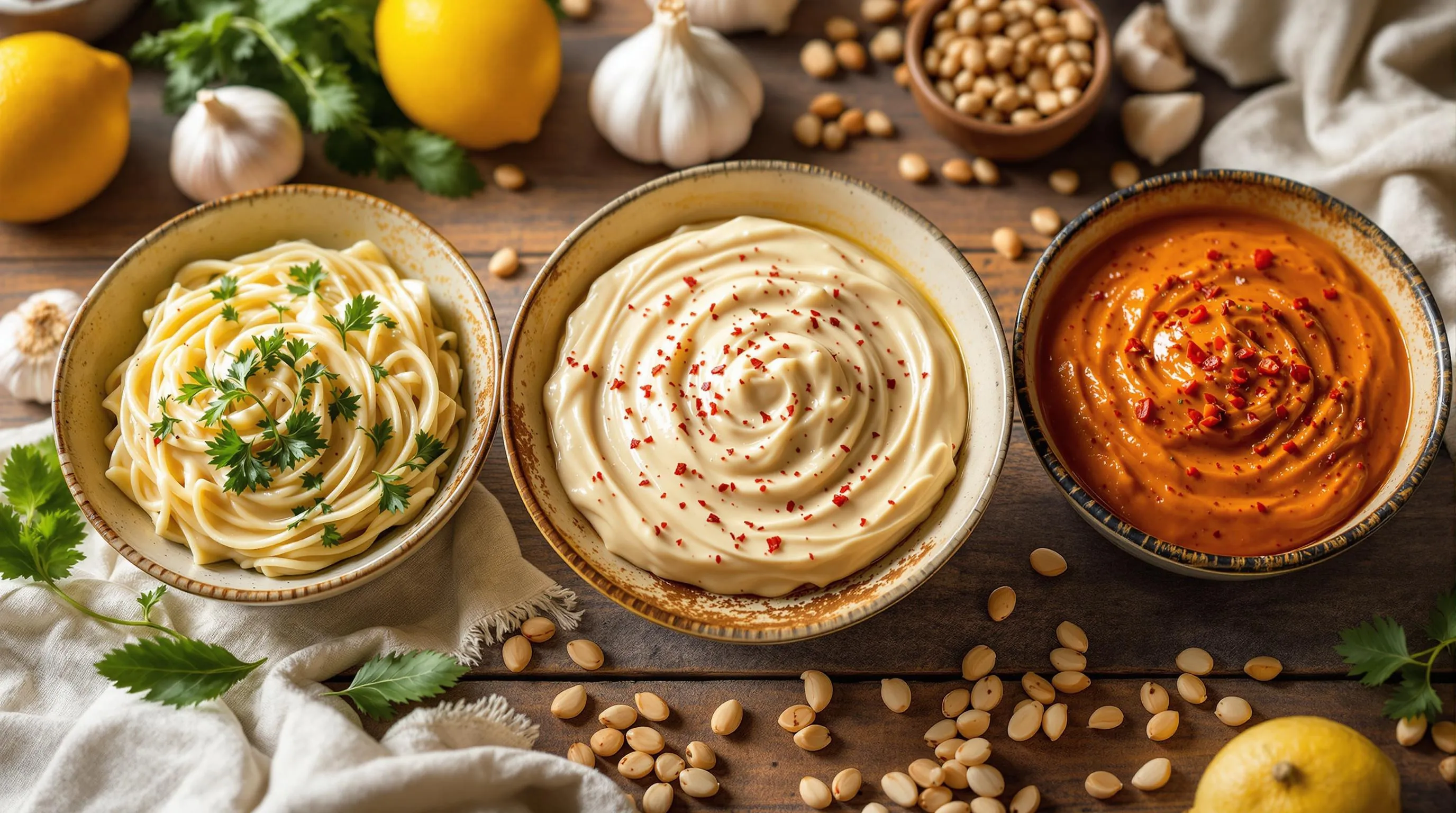
Pine nut sauce shines in its adaptability across various culinary traditions and dietary preferences. You can easily modify this versatile sauce to suit different flavor profiles and nutritional needs while maintaining its signature rich character.
Mediterranean Style
The classic Mediterranean pine nut sauce celebrates simplicity and fresh ingredients. Begin by toasting raw pine nuts until they release their aromatic oils and develop a golden hue. Process these toasted nuts with quality olive oil, fresh lemon juice, and sea salt until you achieve a smooth, luxurious paste. This traditional version pairs exceptionally well with homemade pasta, skillet roasted tomatoes, and vibrant steamed greens. Many home cooks enhance this sauce with freshly grated Parmesan cheese or pine nut Parmesan sprinkled on top just before serving. You’ll appreciate how this sauce can be enjoyed immediately or refrigerated for later use, offering a beautiful balance of nutty depth and bright citrus notes that captures the essence of Mediterranean cuisine.
Dairy-Free Option
Transform pine nut sauce into a creamy dairy-free alternative that rivals traditional alfredo sauce without any animal products. The natural creaminess of pine nuts—thanks to their high oil content and buttery texture—creates an ideal base for those following Paleo or Whole30 diets. Combine puréed cauliflower (preferably cooked in flavorful chicken broth) with toasted pine nuts and unsweetened almond milk for a sauce with remarkable richness and depth. This variation maintains the luxurious mouthfeel you expect from cream-based sauces while offering a lighter alternative that doesn’t sacrifice flavor. Processing all ingredients until perfectly smooth yields a velvety sauce that clings beautifully to pasta and roasted vegetables, providing satisfaction without dairy.
Spicy Version
Elevate your pine nut sauce with a welcome kick of heat for dishes that benefit from more assertive flavors. Start with the classic base of toasted pine nuts and olive oil, then incorporate fresh garlic cloves and warming spices like paprika or red pepper flakes. Process fresh garlic with lemon juice and a splash of cold water before adding your pine nuts and a small amount of breadcrumbs to achieve a creamy, mayonnaise-like consistency. Sweet paprika adds complexity while chili flakes bring customizable heat to this versatile sauce. This spicy variation works wonderfully as a bold dipping sauce for seafood, a flavorful coating for roasted vegetables, or an unexpected accompaniment to grilled meats. The combination of rich pine nuts with aromatic garlic and warming spices creates a multidimensional sauce that awakens the palate and transforms ordinary dishes into memorable culinary experiences.
Pine Nut Sauce Nutritional Benefits
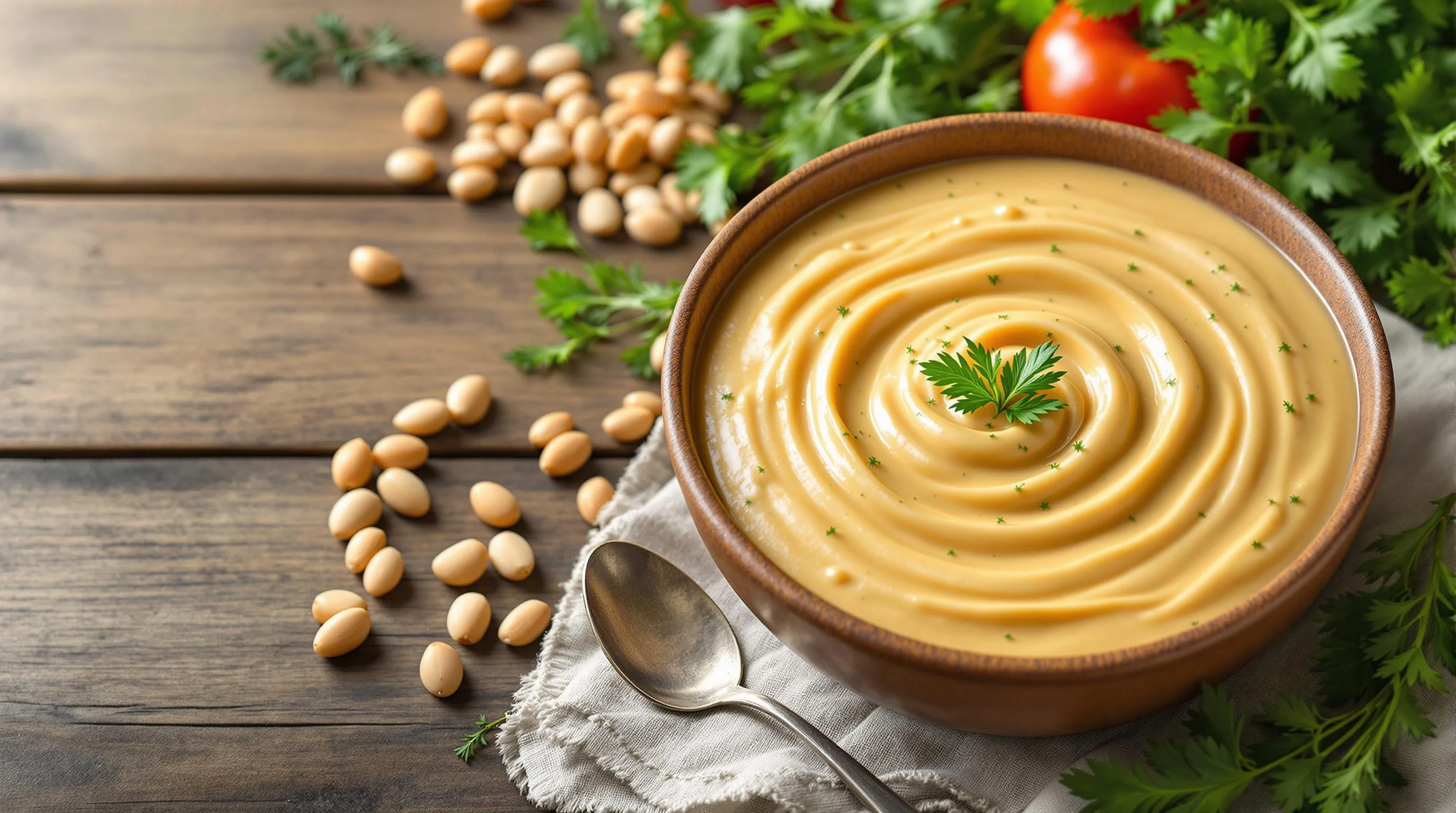
Pine nut sauce delivers an impressive array of health benefits thanks to its star ingredient: pine nuts. These tiny nutritional powerhouses pack a substantial health punch when transformed into a creamy sauce for your favorite dishes.
The heart-healthy fats in pine nut sauce deserve special attention. Pine nuts contain abundant monounsaturated and polyunsaturated fats that actively work to lower bad cholesterol (LDL) while supporting healthy blood circulation throughout your body. Your cardiovascular system benefits greatly from these beneficial fats.
Protein content makes pine nut sauce stand out among other condiments. As an excellent source of plant-based protein, this sauce supports muscle repair and strengthens immune function without adding animal products to your diet.
The vitamin profile of pine nut sauce contributes significantly to its nutritional value. Rich in vitamin E, this sauce provides potent antioxidant protection against cell damage. B vitamins (B1, B2, B3) found in pine nuts aid energy production and maintain healthy skin, hair, and eyes.
Digestive health improvements come from the fiber content in pine nuts. This dietary fiber promotes regular bowel movements and creates a satisfying fullness that supports weight management goals naturally.
Inflammation reduction represents another key benefit of pine nut sauce. The antioxidants present—including vitamin E, zinc, and manganese—work to calm inflammatory responses and boost immune function for better overall health.
Blood pressure regulation gets support from the minerals in pine nuts. Magnesium and potassium help maintain healthy cardiovascular function while magnesium also supports proper muscle function and energy production.
Pinolenic acid, a unique component found in pine nuts, offers special benefits. This natural oil possesses anti-inflammatory properties and may improve insulin function, potentially helping with blood sugar regulation and reducing food cravings.
Brain health receives a boost from the omega-3 fatty acids in pine nut sauce. These essential fats contribute to cognitive function while further supporting heart health by lowering triglyceride levels and reducing heart disease risk.
| Nutrient | Benefit |
|---|---|
| Monounsaturated/Polyunsaturated Fats | Lower LDL cholesterol, improve heart health |
| Plant Protein | Supports muscle repair and immune function |
| Vitamin E | Provides antioxidant protection |
| B Vitamins (B1, B2, B3) | Aid energy production, maintain skin/hair health |
| Fiber | Promotes digestive health and satiety |
| Magnesium & Potassium | Regulate blood pressure and muscle function |
| Pinolenic Acid | Offers anti-inflammatory effects and blood sugar regulation |
| Omega-3 Fatty Acids | Support brain health and lower triglycerides |
Adding pine nut sauce to your culinary repertoire provides these nutritional advantages while improving flavor. The buttery richness complements many dishes while delivering substantial health benefits with each delicious spoonful.
Final Thoughts On Pine Nut Sauce
Pine nut sauce stands as a testament to culinary simplicity transformed into luxury. With just a handful of quality ingredients and minimal effort you’ll create a versatile condiment that elevates everything it touches.
Beyond its rich buttery flavor and creamy texture this sauce delivers impressive nutritional benefits from heart-healthy fats to essential minerals. Its adaptability across cuisines makes it worth keeping in your refrigerator for quick meal enhancements.
Whether you’re drizzling it over pasta tossing it with roasted vegetables or using it as a sophisticated dip pine nut sauce deserves a permanent place in your cooking arsenal. Try making a batch this week and discover how this Mediterranean gem can transform your everyday meals into something extraordinary.
